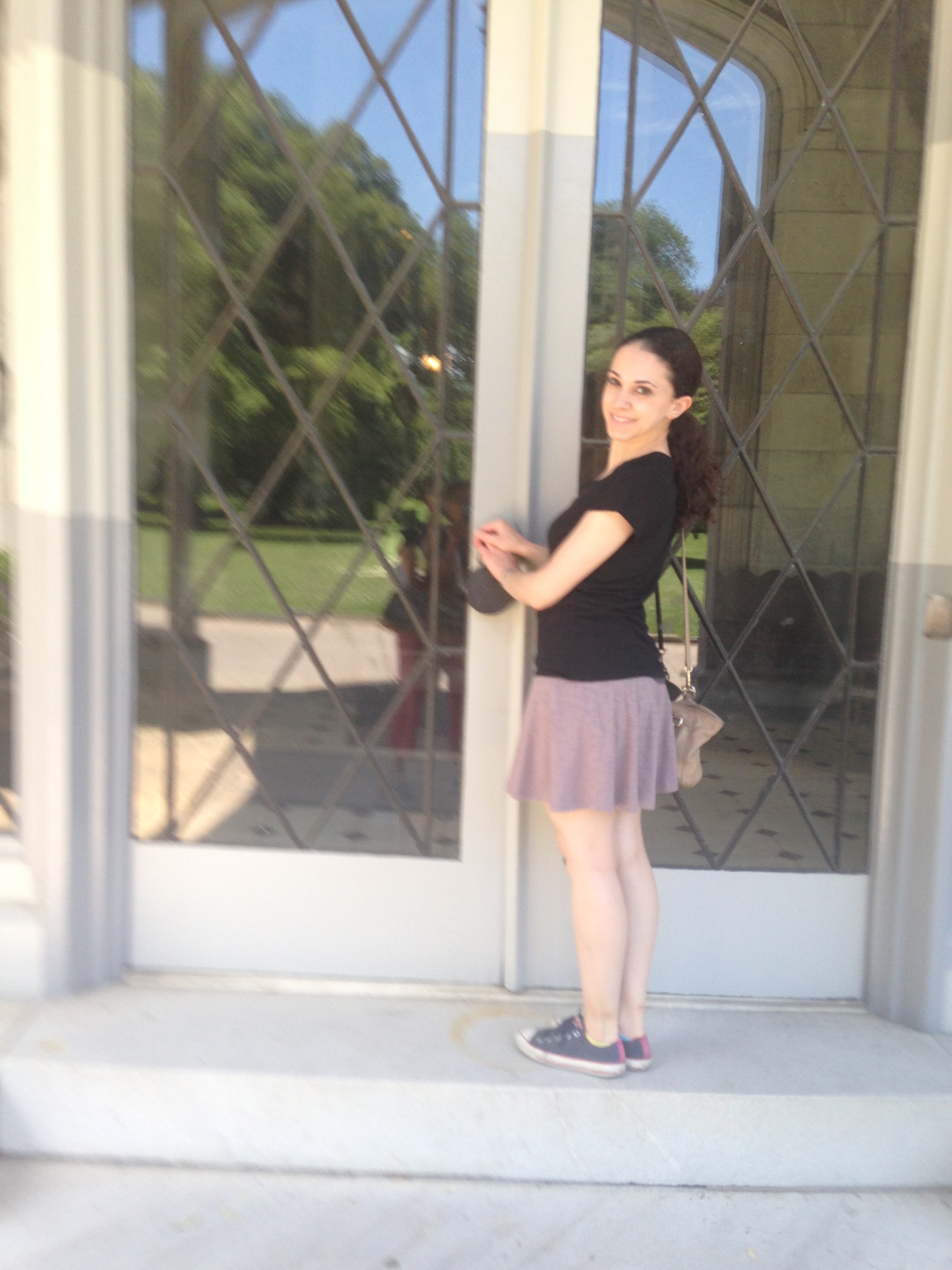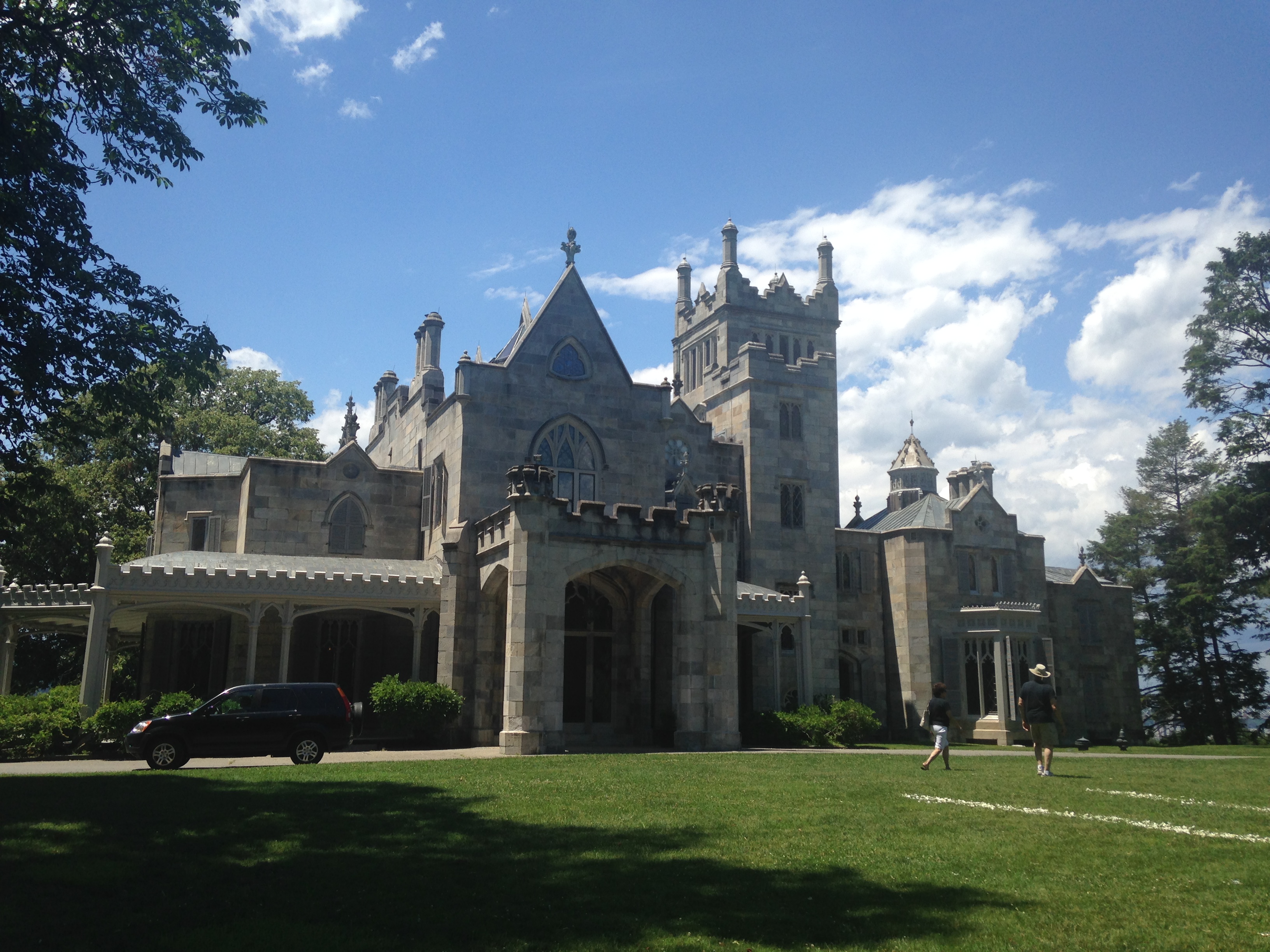
This past weekend, I finally got the opportunity to visit someplace I’ve wanted to see for a long time – Lyndhurst mansion! Lyndhurst is an huge house in Tarrytown, New York. It was first built in the 1838 and enlarged in 1864. Three families lived in the house between its completion and 1961 – those of politician William Paulding, businessman George Merritt, and Gilded Age industrialist Jay Gould. It is now owned and taken care of by the National Trust for Historic Preservation.
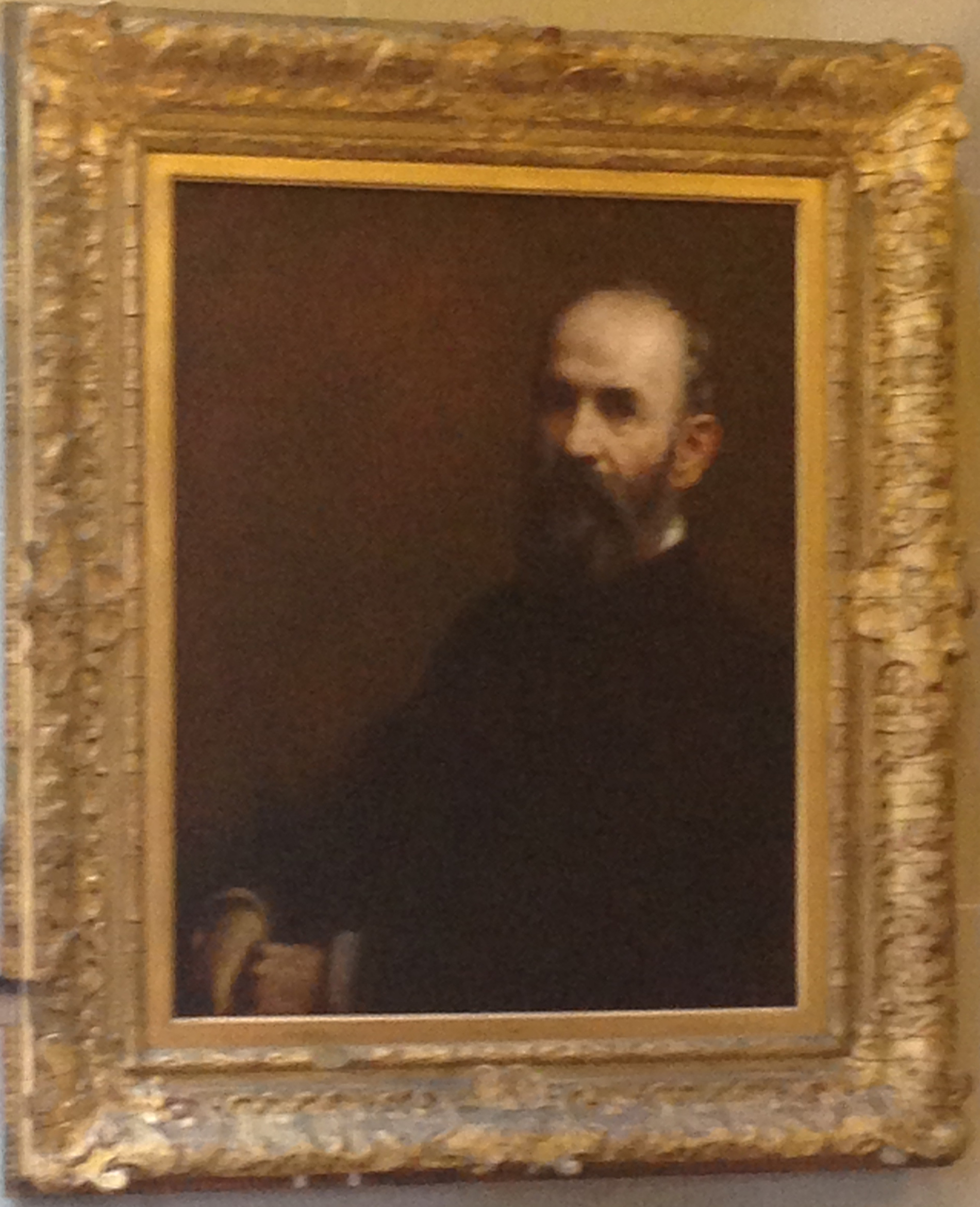
Lyndhurst is exciting for several reasons: its incredible Gothic Revival architecture by Alexander Jackson Davis, beautiful stained glass windows by Louis Comfort Tiffany and John LaFarge, and furniture by the Herter brothers, David, and J. & J.W. Meeks. The overall picture is generally massive and gorgeous; the grounds and view of the Hudson River are every bit as impressive as the house itself. It’s basically a castle!
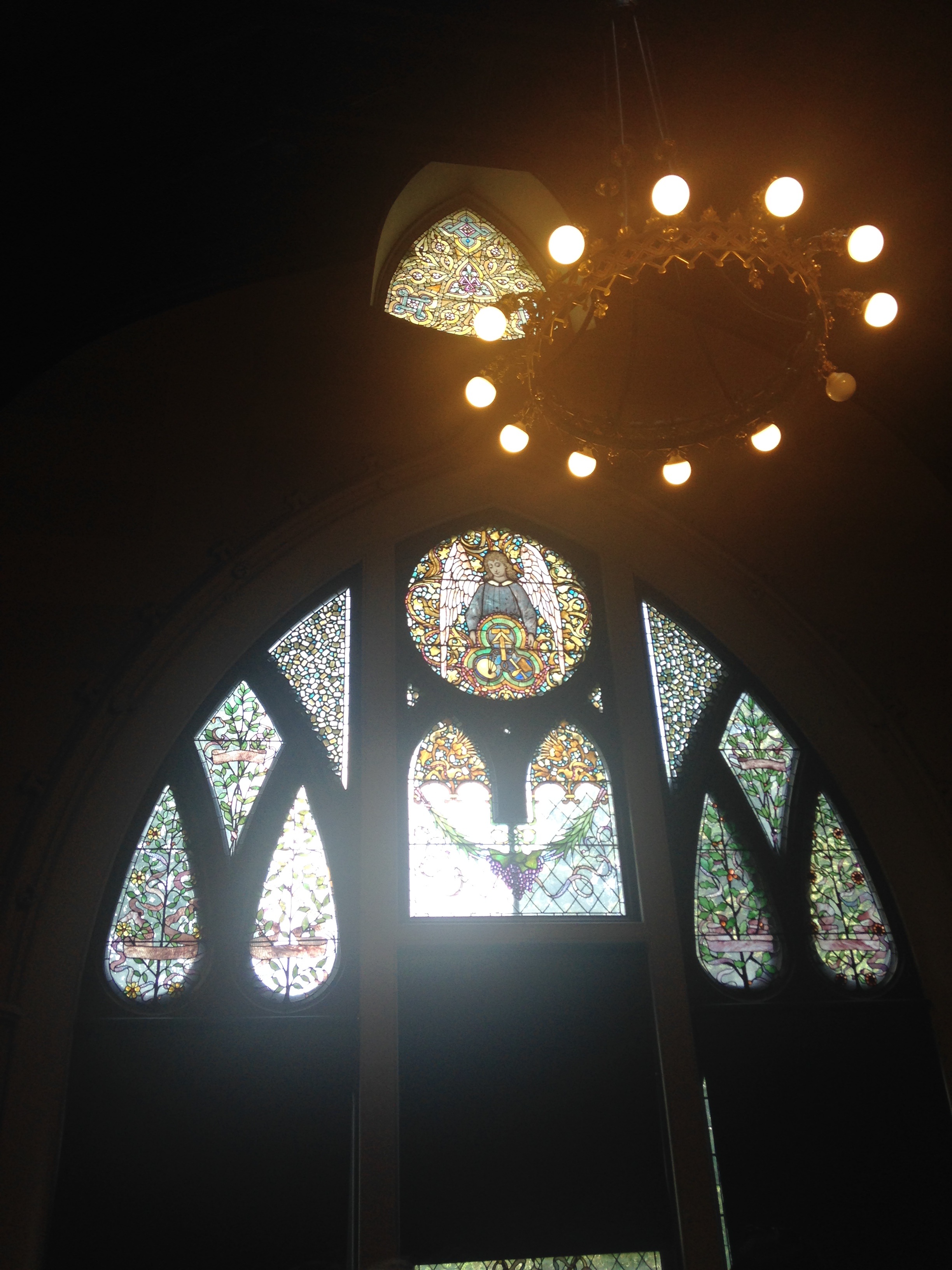
I took the Classic Mansion Tour, which is recommended for first-time visitors. The tour lasts one hour and takes you through all the major living spaces on the first and second floors. The highlights are definitely the ornate Gothic dining room and the high-ceilinged art gallery full of 19th-century European paintings. Here are a few cool things I learned and observed:
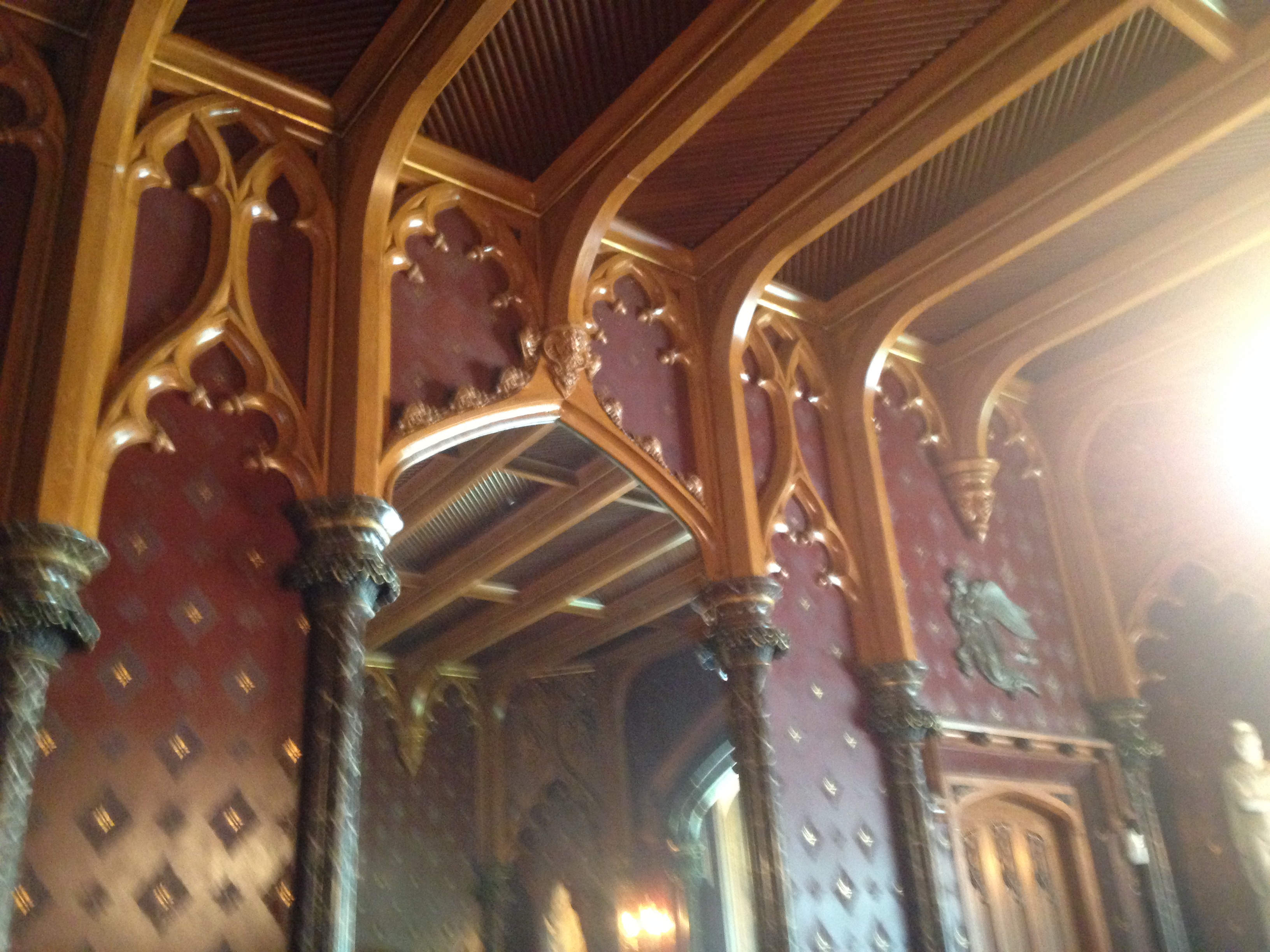
The interior walls look like they’re marble, but they’re actually covered with canvas and hand painted to look like marble. Apparently, this was considered very stylish when the house was first built.
The architecture are fabulous, but the Gothic Revival details in the furniture and decorations are even more incredible. Chairs, tables, and bookcases are shaped as pointed arches with crocket details. Even the arms of the dining room chandelier look like Gothic tracery. Pay attention to this stuff as you walk through. Of course, actual medieval furniture wasn’t designed like this, but I appreciate these touches nonetheless.
Look at the ceilings in each room. You won’t be sorry you did.
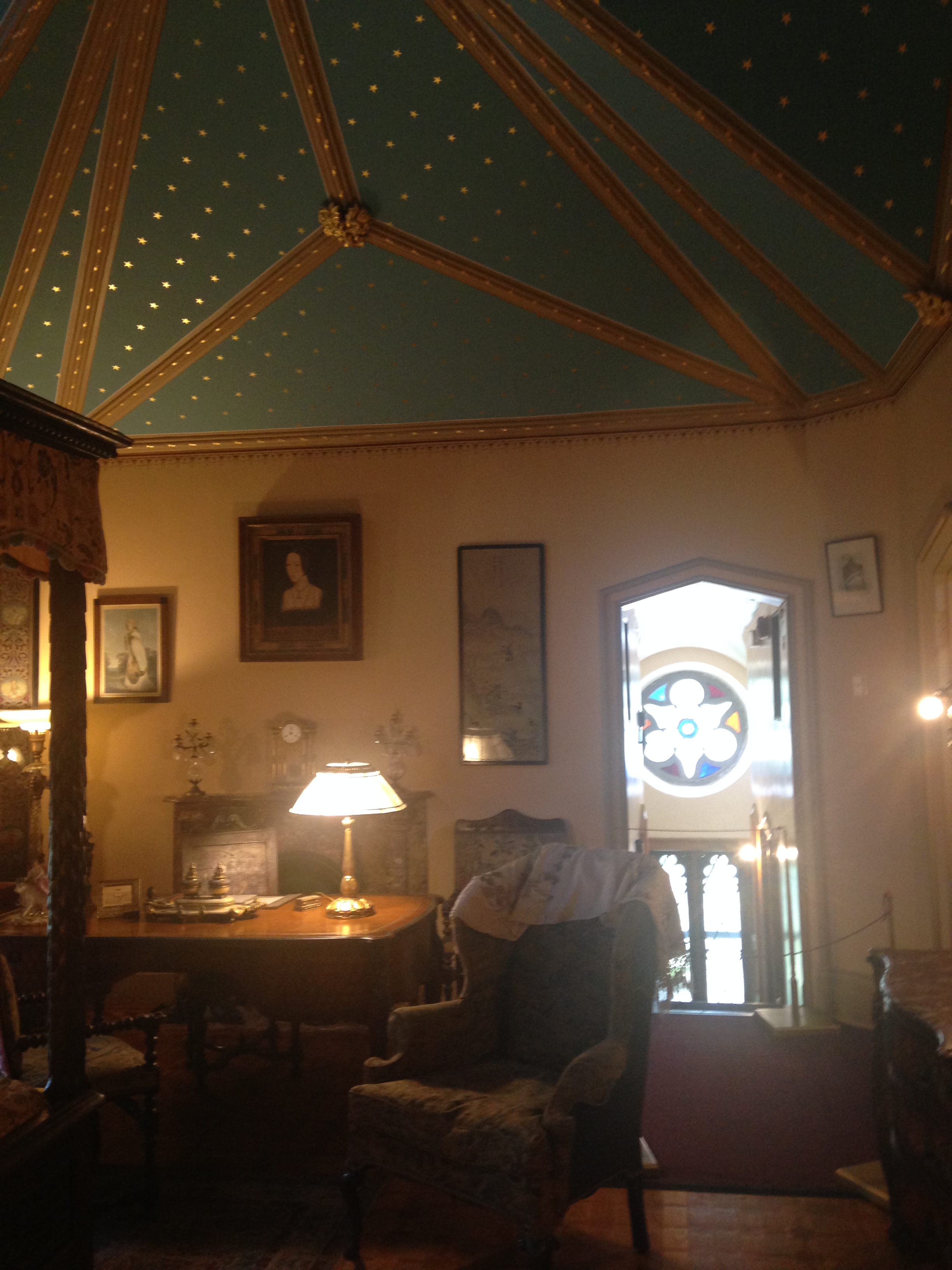
All of the house’s contents are original to the three families who lived there. Nothing is a reproduction or later acquisition of the correct period. Moreover, the contents is arranged according to photographs and other archival sources. Basically, the house looks like the owners still live there, particularly since everything is in excellent condition.
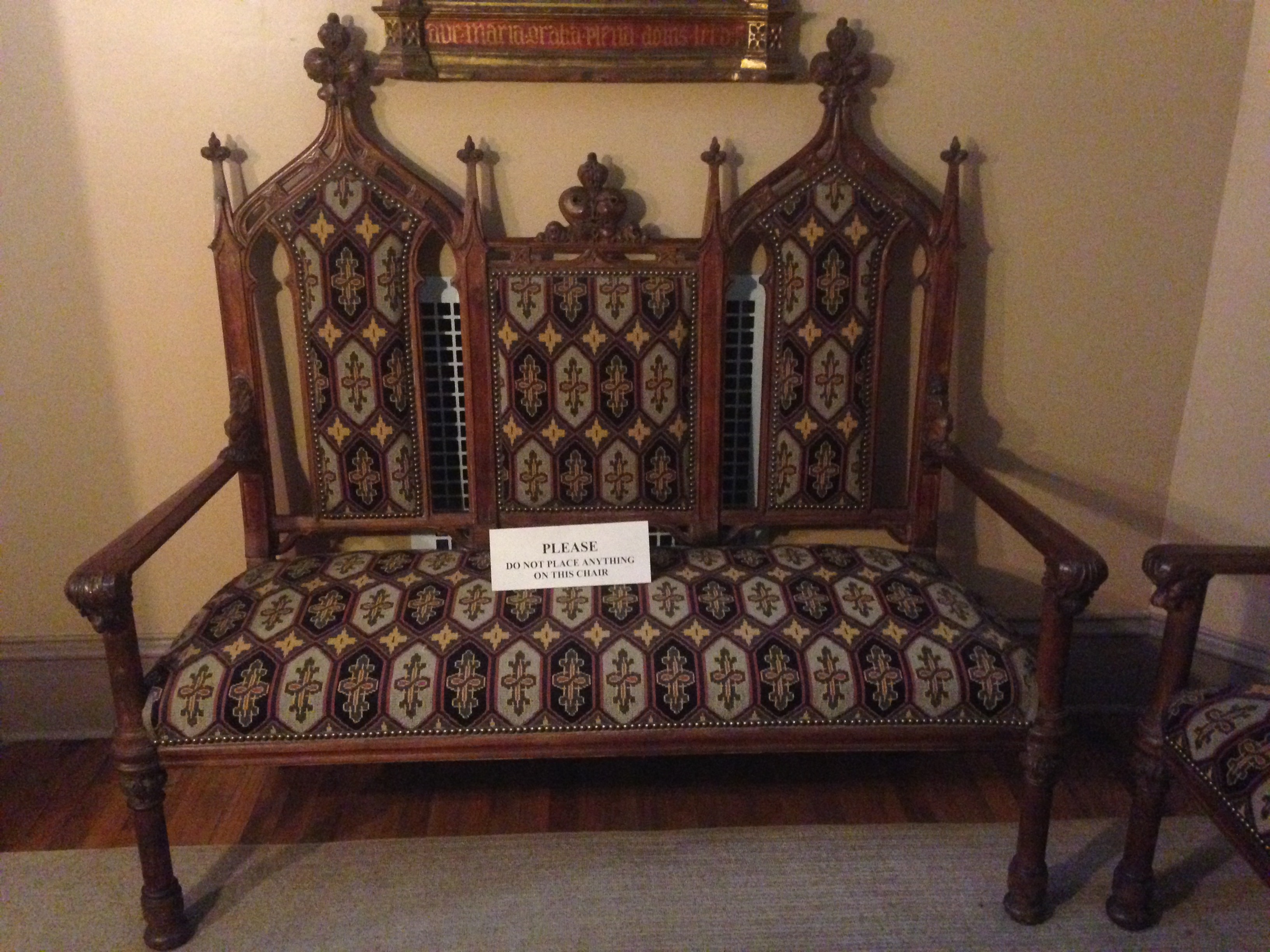
The second-floor art gallery holds Gould’s collection of paintings. Except for his portrait, the entire collection is of 19th-century European paintings (Bouguereau, Gerome, etc.) Like many other Gilded Age nouveau riches, he doesn’t seem to have taken any interest in American paintings. Second owner George Merritt, however, was personally friends with Hudson River School painter Jasper Cropsey, whose work hangs in the entrance hall. I spotted a few medieval or early Italian paintings in the dining room, but I’m not sure which owner purchased them.
There are little faces scattered throughout the house. See if you can find them all. They’re mostly on architectural supports where the ceiling meets the walls.
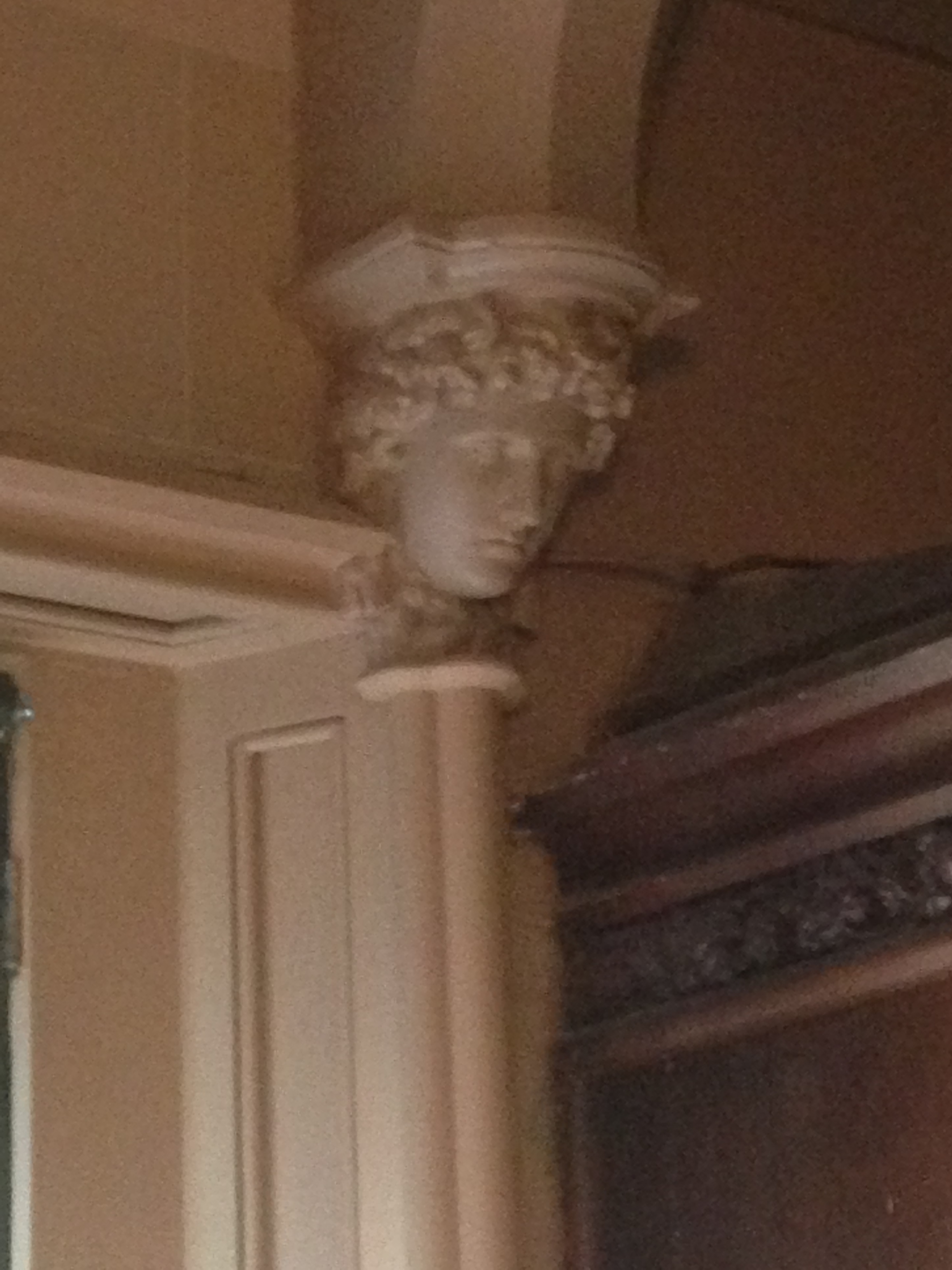
In addition to the mansion itself, I got to see a small exhibition of dresses worn by Gould’s two daughters, Helen and Anna, who were discussed during the tour. They seem to have been pretty cool ladies. Helen was philanthropic world traveler who gave away millions to the less fortunate. She got married in her 40s to a guy who wasn’t rich at all. They had a happy life together with their four adopted children. Anna was chic and loved to party. She moved to Paris, where she lived in a big house (not as big as Lyndhurst), married a nobleman, and then married his cousin after he divorced her. Anna was the person who gave Lyndhurst to the National Trust. Anyway, I got to see a selection of dresses, hats, and accessories worn by both the daughters, as well as a few worn by Gould’s actress daughter-in-law. They were all gorgeous, and they varied in style from formal, bustled dresses to flapper dresses.
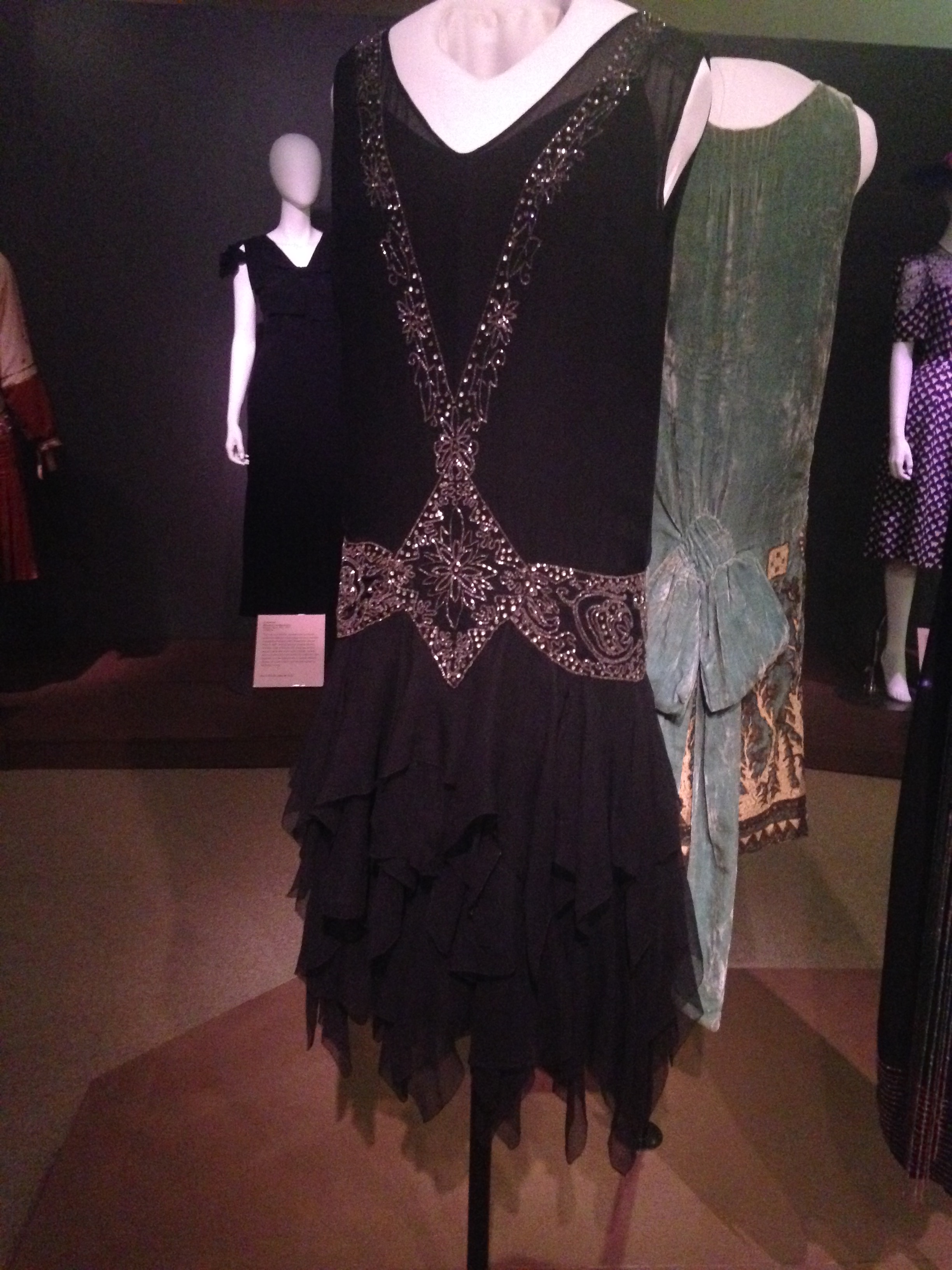
There are also a few other things to see on the grounds, and you can view them at your leisure before or after your tour.
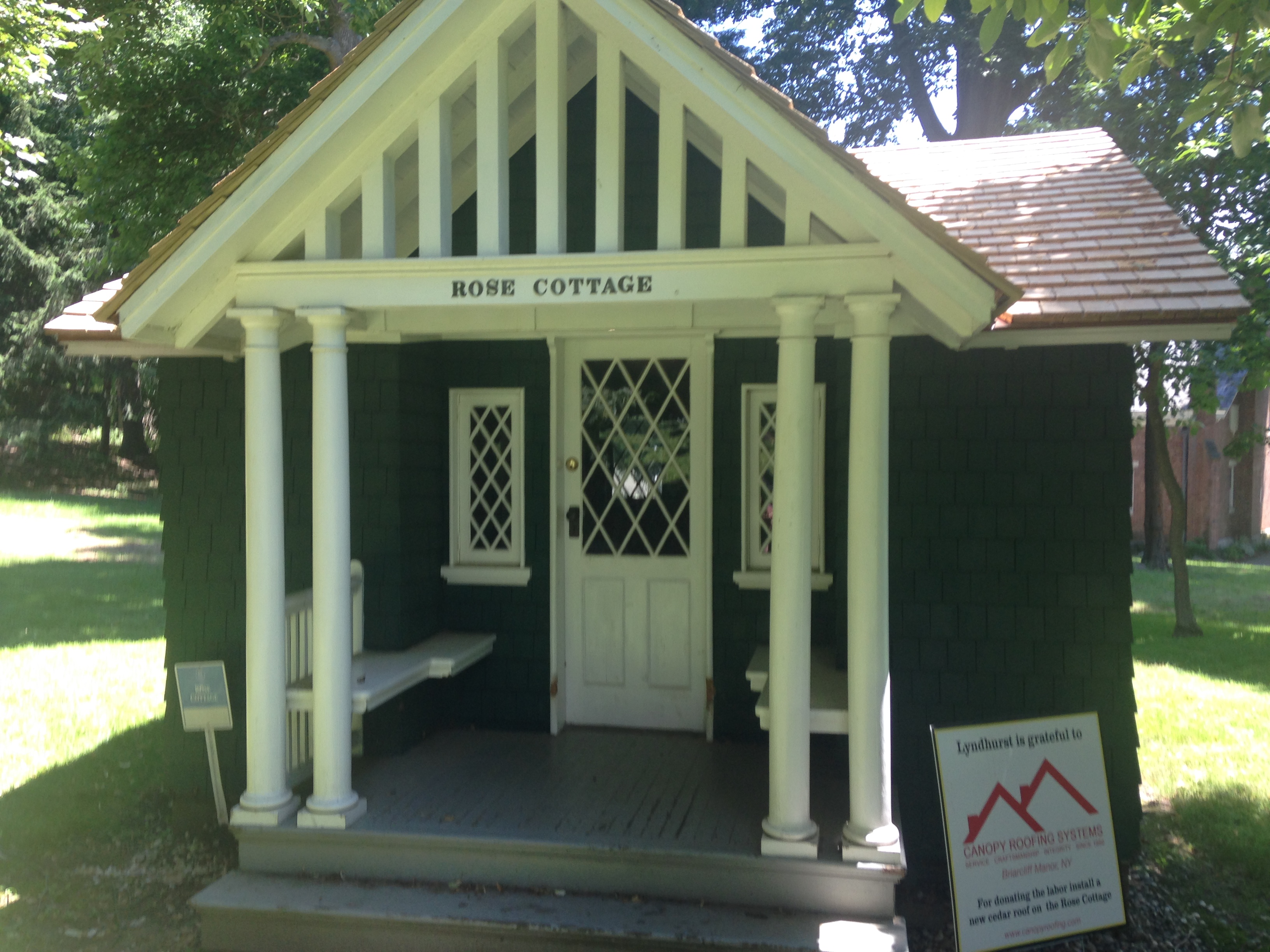
- The rose garden – I only got to see it from the car, but it looked beautiful.
- The greenhouses – They’re empty of glass and plants, because they’re too big for the National Trust to afford right now. But even as massive shells, they’re pretty awesome.
- The bowling alley – It’s housed in its own long building down the hill near the water. It’s not opened for general visitors; you have to take a special Bowling Pavilion tour to get in, but you can peek through the windows.
- The playhouse – Helen built this cute little cottage for her twin nieces to enjoy when they came to visit. Peek through the front-door window to see the little wicker furniture inside.
- The pool – I couldn’t find it, but apparently there is one.
- The view of the Hudson River and Tappan Zee Bridge – It’s pretty spectacular. The little bridge that extending a short way out into the water was built by Gould. He literally climbed over rival Vanderbilt’s railroad to access his private boat that took him into the city.
- Also, make sure you walk around the house and view the exterior from every angle. If you don’t, you’ll miss a lot of great architectural details that aren’t as obvious from the inside.
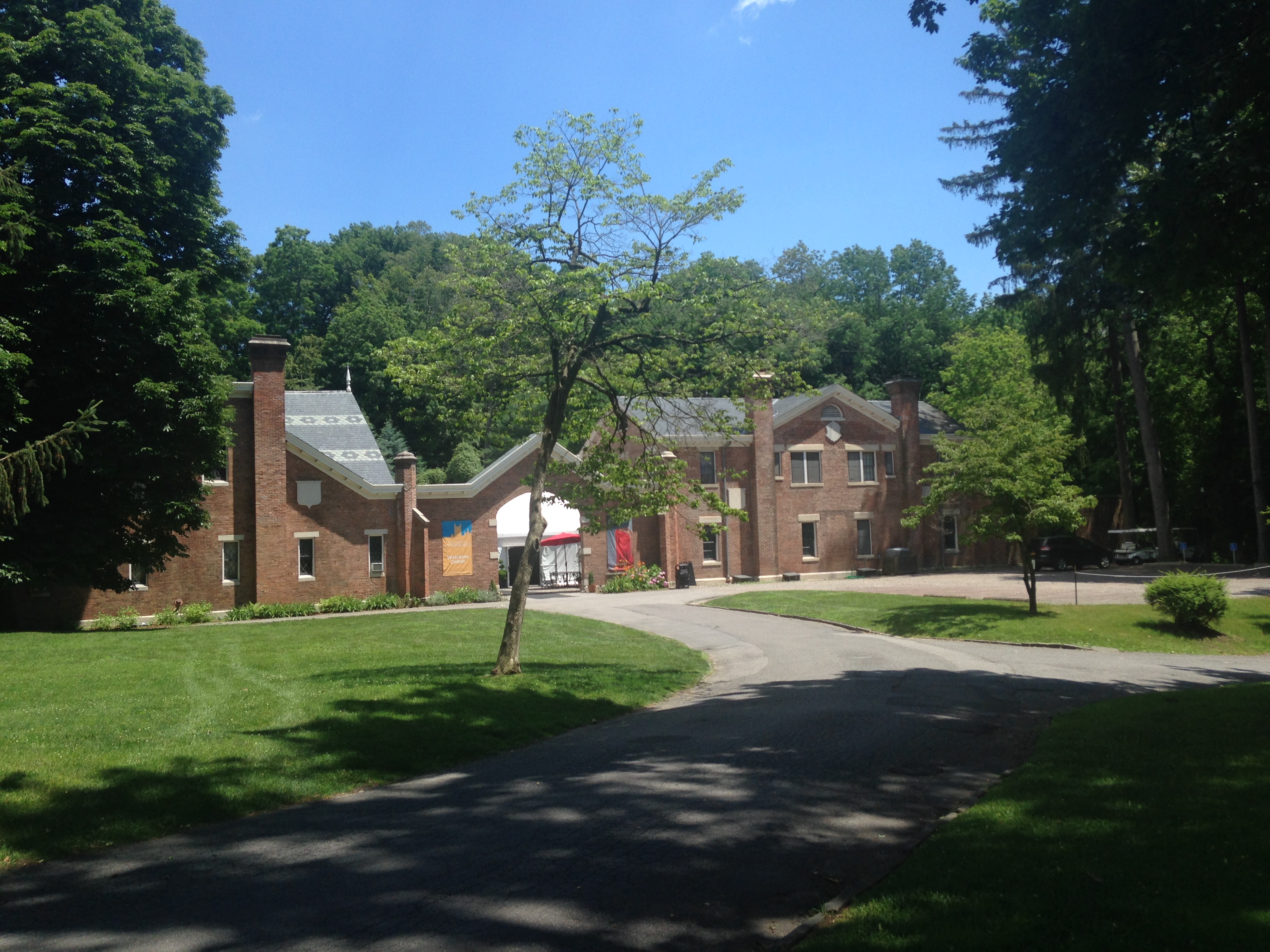
Next time I visit, I will definitely take the more in-depth Backstairs Tour. As the name suggests, it covers the servant’s rooms and the kitchen, but it also allows you to climb up to the top of the five-story observation tour. Apparently, one of the owners (don’t remember which) was really into astronomy. The Backstairs Tour is only available from May through September, but I would also consider taking the Classic Tour again during the holidays, when the mansion is beautifully decorated for Christmas.
